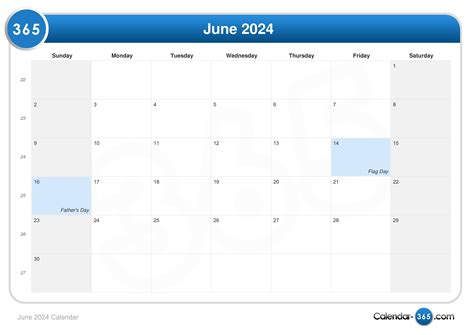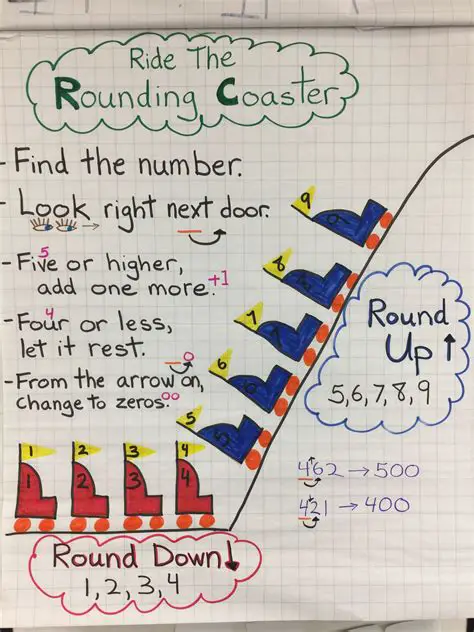Rounding is a fundamental mathematical skill that helps us estimate and approximate values, making it essential for students of all ages. This comprehensive article provides an in-depth guide to rounding with a focus on creating and using anchor charts.

What is an Anchor Chart?
An anchor chart is a visual representation of key concepts, strategies, or procedures that serves as a constant reference for students. In the context of rounding, an anchor chart can provide clear and concise instructions, examples, and practice exercises.
Creating an Anchor Chart for Rounding
An effective anchor chart for rounding should include the following elements:
- Title: Rounding
- Definition: Rounding means finding an approximate value of a number by replacing it with a nearby whole number, multiple of 10, 100, or any desired place value.
-
Steps:
- Identify the place value to which you want to round.
- Look at the digit in the next place value.
- If the digit is 5 or greater, round up.
- If the digit is less than 5, round down.
-
Examples:
- Round 36 to the nearest ten: 40
- Round 123 to the nearest hundred: 100
- Round 555 to the nearest thousand: 600
-
Practice Exercises:
- Round the following numbers to the nearest ten: 25, 48, 73
- Round the following numbers to the nearest hundred: 145, 278, 550
-
Common Mistakes to Avoid:
- Not identifying the correct place value.
- Rounding in the wrong direction.
- Misreading the digit in the next place value.
Using Anchor Charts in Rounding Instruction
Anchor charts can be used in various ways to enhance rounding instruction:
- Introduction: Use the anchor chart as a starting point to introduce the concept of rounding.
- Reference: Display the anchor chart prominently in the classroom or provide copies to students for easy reference.
- Guided Practice: Use the anchor chart to guide students through rounding exercises.
- Independent Practice: Encourage students to use the anchor chart independently when solving rounding problems.
- Assessment: Use the anchor chart as a tool for assessment to gauge student understanding.
Benefits of Anchor Charts for Rounding
Anchor charts for rounding offer several benefits:
- Visual Representation: They provide a clear and visual representation of the rounding process.
- Constant Reference: They serve as a constant reminder of the steps and strategies involved in rounding.
- Personalized Learning: They can be customized to meet the specific needs of individual students or classrooms.
- Increased Engagement: They engage students and make learning more interactive.
- Improved Understanding: They help students develop a deeper understanding of the rounding concept.
Tables for Rounding
To facilitate rounding, the following tables provide a systematic approach:
| Digit in Next Place Value | Round Up | Round Down |
|---|---|---|
| 5, 6, 7, 8, 9 | Yes | No |
| 0, 1, 2, 3, 4 | No | Yes |
| Place Value | Rounding Rule |
|---|---|
| Nearest Ten | Look at the digit in the ones place. Round up if it is 5 or greater, otherwise round down. |
| Nearest Hundred | Look at the digit in the tens place. Round up if it is 5 or greater, otherwise round down. |
| Nearest Thousand | Look at the digit in the hundreds place. Round up if it is 5 or greater, otherwise round down. |
Common Mistakes to Avoid
Common mistakes to be aware of when rounding include:
- Rounding to the wrong place value.
- Ignoring the next place value when rounding.
- Misinterpreting whether to round up or down.
- Failing to adjust the digit in the rounding place value when necessary.
FAQs on Rounding
-
What does it mean to round a number?
Rounding a number means approximating it to a specified place value by finding the nearest whole number, multiple of 10, 100, etc.
-
What are the different rounding rules?
Rounding rules vary depending on the place value. For example, to round to the nearest ten, round up if the ones digit is 5 or greater; otherwise, round down.
-
How can anchor charts help with rounding?
Anchor charts provide visual representations of rounding steps, serve as constant references, and enhance engagement and understanding.
-
What are some common mistakes to avoid when rounding?
Common mistakes to avoid include rounding to the wrong place value, ignoring the next place value, and misinterpreting the rounding rule.
-
How can I practice rounding?
Practice rounding exercises using anchor charts, worksheets, or online calculators to refine your skills.
-
What are the real-life applications of rounding?
Rounding is used in various fields, such as measurement, estimation, finance, and data analysis.
Conclusion
Anchor charts are invaluable tools for teaching and learning rounding. By providing a clear and engaging visual representation of the concept, anchor charts support student understanding, improve accuracy, and encourage independent practice. By creating and using effective anchor charts, educators can foster a deep understanding of rounding and promote mathematical proficiency.
